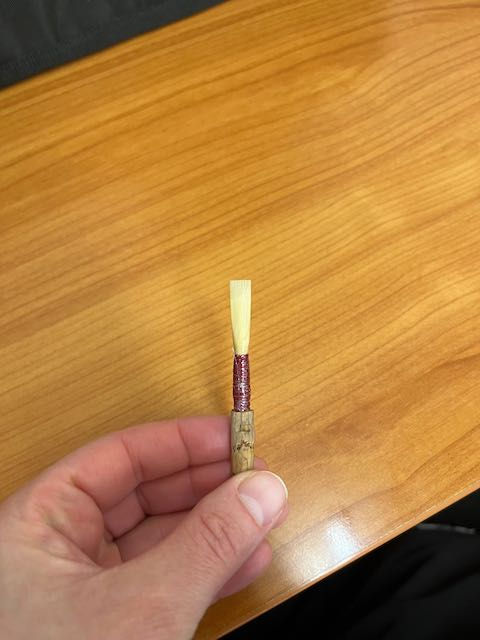Oboe 101: Do you dust and polish your keys?
- agessneroboe
- Jan 9
- 3 min read
Most oboes have silver-plated keywork, which slowly oxidizes and gathers dust over time. Yes, even if you store your oboe in your case most of the time, it will still gather dust.
One of the best ways to keep your oboe in good working order AND to maintain its resale value is to dust and polish your keywork regularly.
How do my keys get dusty?
Dust settles into keys gradually over time just like it settles onto surfaces of furniture in your house. You probably won’t notice the dust accumulating, but it’s in the air everywhere that humans are, and during a 2.5-3 hour rehearsal, dust will slowly accumulate on your instrument.
It’s for this reason that you should try not to leave your oboe out of the case when not in use.
Now, I know some of us need to leave the oboe out of the case when working on reeds, for example, or in my case while teaching. To help avoid dust, I use a protective sleeve over my oboe when I’m not using it during lessons. It is a hassle, but I think it’s helped keep less dust from accumulating on my oboe over time.
A special precaution for those of you who work on your reeds: never scrape your reeds while your oboe is in your lap. Cane shavings can fall on the oboe and get stuck in the mechanism and cause you real issues. They can also fall into the holes in the keys and then attract water…and no one wants water in their keys. Be safe and use an oboe stand when you’re working on reeds.
How do I dust my oboe?
If you look at your oboe, you’ll notice that the keywork is super intricate and full of small spaces that a dust rag simply can’t reach. Unlike your furniture, you’re not going to use a rag or any spray products to remove dust from the keys. (Honestly, I’m not sure how safe canned air would be, like you’d use for a computer keyboard, that’s a question for repair professionals.) Instead you’ll use a paintbrush or in my case a glue applicator brush from the hardware store.
I like the glue applicator brush because the bristles are stiffer and I feel they do a better job of dislodging the dust. I have, however, accidentally gotten bristles stuck in crevices and had to pull them out of the oboe later. I’ve also accidentally un-hooked springs with the glue applicator brush, but those are easily re-hooked with my spring hook tool.
Polishing the keys
The keys on the oboe are typically silver plate, as I mentioned earlier. This means that over time they will get dull and tarnished, even if you just let the oboe sit in its case. Typically new instruments come with silver polishing cloths, which you should use to clean the keys on occasion.
Do NOT use silver polish on your keys! It can harm the body of the instrument and remove the oil that keeps the keys moving properly. When you polish your own oboe, you’ll typically do a dry-polish on the keys and rods that you can easily reach. If you’re comfortable with removing your keys, you can remove all the keys and polish them up really nicely that way, but don’t remove your keys if you haven’t been taught how to!! Remember, oboes are really touchy and will just…not work if you put something back together improperly.
You can also purchase anti-tarnish strips to keep in your case to minimize the tarnishing that occurs naturally. They don’t last forever, and I’m not sure how well they work to be honest.
I typically dust and polish my keys once a quarter, more often if I’m playing a rehearsal with a lot of rests or tacets that I have to sit on stage through. I find dusting and polishing to be a really nice way to keep my hands busy so my brain can stay engaged or at least alert during rehearsal.
If you found this article helpful, you might enjoy my free weekly newsletter Oboe 101. Subscribe here.




Comments